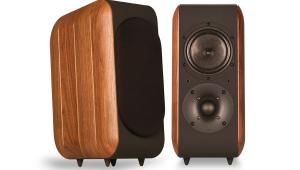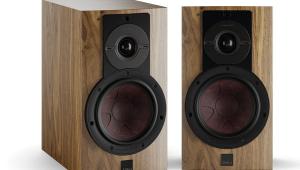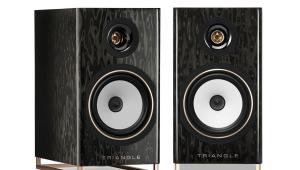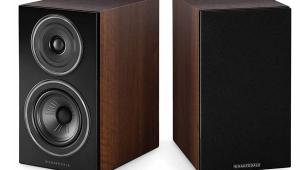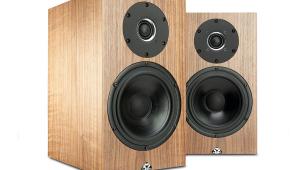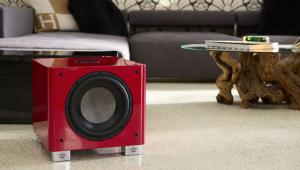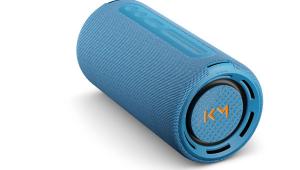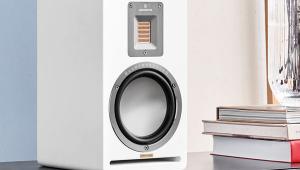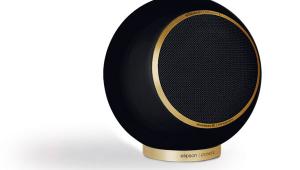KLH Kendall
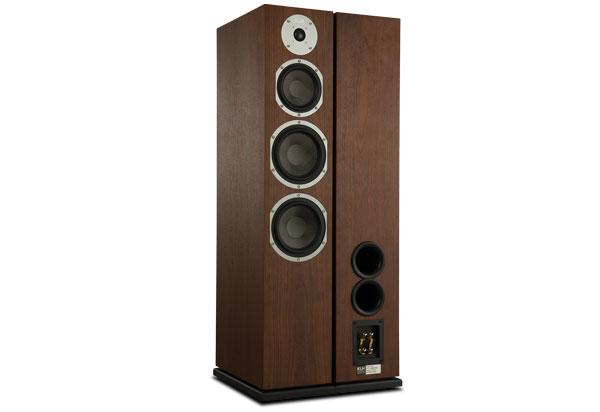
 Our hi-fi journeys might mirror Paul McCartney’s long and winding road, but a short time after setting off some travellers will encounter a challenging curve. Let’s call it buying speakers and the circa £1,300 price point dilemma. Once, the best advice would have been to go for a monitor-class standmount, prioritising quality over quantity, but things aren’t quite as clear cut any more.
Our hi-fi journeys might mirror Paul McCartney’s long and winding road, but a short time after setting off some travellers will encounter a challenging curve. Let’s call it buying speakers and the circa £1,300 price point dilemma. Once, the best advice would have been to go for a monitor-class standmount, prioritising quality over quantity, but things aren’t quite as clear cut any more.
Comparably priced big floorstanders have undergone a fairly radical repertoire reset in recent years, offering a real (if value-orientated) taste of that high-end holy grail: fusing a wide power bandwidth with speed, resolution and refinement.
For me, the switch-up game changer has been Bowers & Wilkins’ £1,249 603 (HFC 448), a beefy, well-built, three-way Brit tower dripping with trickle-down tech from its more expensive model lines that does so many things so well. My only regret is that it wasn’t immediately followed up by the speaker you see here: reinvigorated American brand KLH’s virtually identical take on a high-performance, three-way floorstander that’s nigh on the same size and weight, shooting for the same lofty sonic goals and costing only slightly more. It’s named after Kendall Square in Cambridge, Massachusetts, the town of its (original) maker’s birth.
Regular readers will have already seen the KLH Albany two-way standmount last month and know that the company relaunched last year in the US with former president of global sales and Klipsch board member David P Kelly in the driving seat and now the venerable brand is selling its rebooted lineup worldwide, distributed in the UK by Dublin-based TBM Solution.
For now, the Kendall is the flagship dynamic driver floorstanding model. It’s big and heavy enough to require careful and methodical extraction from its sturdy packaging but at least the process showcases the speaker’s solid build and tidy real-wood veneer finish, which is a little more deluxe than the aforementioned B&W’s. When it comes to finishes you get to choose between black oak or American walnut as reviewed here.
Setup is speedy as there’s just a nicely engineered set of pointy-cone style spikes (or rubber feet, if you prefer) to wind into the base and links to remove from the two sets of binding posts if you’re going to bi-wire or bi-amp. As for positioning, my initial set up allows just under a metre of free space from back and side walls with mild toe-in towards the listening position. If close boundary proximity is unavoidable, foam bungs for the reflex ports come supplied.
The Kendall is a three-way, bass reflex design (two rear-firing ports) toting two 165mm bass drivers, a 133mm midrange driver and a 25mm anodised aluminium dome tweeter with a brushed aluminium ‘linear response’ faceplate. The main drivers use woven Kevlar cones and butyl rubber surrounds in a power-coated diecast aluminium chassis, the motor systems featuring oversized magnets. KLH mentions the ‘braided tinsel’ internal cabling, custom-made, multi-element crossovers and high-quality components.
A couple of things leap out from the spec sheet. One is the claimed frequency response. A top-end of 23kHz is about par for the tweeter type, but bass that reaches down to 25Hz (-3dB) is very impressive – even for a strapping tower like this. The other is the quoted 96dB sensitivity, which means driving the Kendall with low-powered tube amps should be entirely feasible if you’re so inclined.
Sound quality
Just like the B&W 603 that set the £1,300 bar in my listening room a few months ago, here is a big speaker born to deliver an expansive, full-range sound that, as already discussed, doesn’t require the services of a powerful amp to get it done. This is probably just as well as the Hegel H90 integrated amplifier (HFC 427) I’m using has a modest 60 solid-state Watts per channel. The upsides are pretty fab low-frequency grip arising from the amp’s very high damping factor, a lovely, natural tonal palette, great transparency, locked down timing and the ability to resolve as much low-level detail as the Audiolab 6000CDT CD transport (HFC 447) and Chord Electronics Hugo 2 DAC (HFC 428) front end can serve up. Don’t pay any attention to the Hegel’s meagre on-paper power rating, this is a potent, talented and dynamic way to drive the Kendall and it laps it up.
Rather aptly, I think, first up is American soul legend PP Arnold’s return to recording studio after a 50-year hiatus with only her second album, The New Adventures Of PP Arnold. Stylistically, it’s as if the half-century gap never happened and even the production is careful not to sound too slick and modern. Straight away, musical connection is strong with a lively, open midband and smooth, well-extended and, when required, weighty and propulsive bass. The big KLH is an impressively articulate speaker, too, easily resolving nuances of phrasing and tempo tweaks that give Arnold’s performance believability.
The brilliant opener, Baby Blue, has a sonorous period swagger that the Kendall captures beautifully, preserving the deftly struck balance between PP’s golden pipes and the irrepressible verve of the brass section. Free from grain and coarseness, detail isn’t presented in flashing, neon-lit capitals but as integral – the lubricant that makes the music mesh and flow without sounding artfully hyped, the way hi-fi sometimes can. There’s a likeable sense of assurance and authority that’s smooth and tuneful and involves you with the music in a physical way.
Among the handful of covers, the treatment of Sandy Denny’s simply sung I’m A Dreamer infuses a weighty, dark, soulful angst and dense orchestral backdrop that works amazingly well. Again, the Kendall is particularly adept at marshalling the competing strands into a cohesive whole in which the emotional dynamic ebbs and flows unhindered and with its fair share of gloriously scalp-tingling moments.
Denied a direct A-B comparison, I can’t be sure – but from what I remember – the B&W 603 will have sounded a touch more explicit and animated with this material, giving a greater sense of transparency through the midband and treble. The Kendall, on the other hand, has a richer balance and bass that, while sounding a little less obvious, is deliciously smooth, even, agile and extended. Marcus Miller’s electric bass guitar on the title track of The Sun Don’t Shine is simply stunning through the Kendall, not just for the remarkable leading-edge definition but the way it conveys the persuasive, percussive weight and expressive note shaping.
Conclusion
If the plan is to enter a market ignored for decades and take on a host of well-loved, dug-in brands, this is the way to do it. The Kendall is another exciting example of a floorstander with impressive bandwidth capability that offers outstanding sound quality for the money in a package that looks smart and is well made. There are gifted British rivals, some of which are a little prettier, but the tall and talented KLH has an awful lot going for it and is very easy to recommend. DV
DETAILS
Product: KLH Kendall
Price: £1,400
Origin: USA/China
Type: Three-way floor standing loudspeaker
Weight: 22kg
Dimensions: (WxHxD) 197 x 1,016 x 375mm
FEATURES
● 1x 25mm anodised aluminium dome tweeter
● 1x 133mm Kevlar midrange driver
● 2x 165mm Kevlar weave bass drivers
● Quoted sensitivity: 96dB/1W/1m (8ohm)
 |
Inside this month's issue:
Ruark R610 music system and Sabre-R standmount speakers, PMC twenty.23i Active, floorstanders, English Acoustics Downton preamplifier, Bluesound NODE ICON preamp/streamer, Ortofon Concorde Music Blue MM cartridge and much, much more
|







